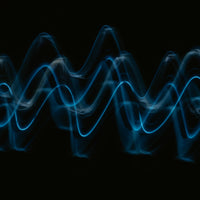At some point, most psychonauts will notice a strong overlap between psychedelic experiences and dreams. In both, the subconscious often expresses itself through the language of symbolic representation.
“Honestly, I see them as 100% overlapping,” notes Mackenzie Amara, a Jungian analyst who uses post-psychedelic-journey dream analysis to help clients with integration. “Pretty much ubiquitously, people come out of the psychedelic experience, and in the integration conversations, they’ll say something like, ‘God, it's so like a dream,’ or, ‘Thinking about it now, it just really feels like a dream.’ So, I think on a phenomenological level, we are experiencing [dreaming and tripping] the same way.”
Like Amara, integrative mental health specialist Dr. Katherine Lawson feels that dreams and psychedelic visions come from the same place. She has spent the better part of two decades exploring this connection.
She offers, “If you believe that the source from which those images come is your own subconscious, which is held within the collective unconscious—and that means they're your images and that they come in service to you—then when you work with those images, whether it's a dream or a [psychedelically induced] vision, you are able to incorporate information that is not necessarily available to you in your waking consciousness, in my experience, for your own growth, healing and wholeness.”
Nice Doggie …
Lawson, a certified practitioner of a post-Jungian dreamwork method called Embodied Imagination, has developed a practice that enables people to revisit a psychedelic experience and get useful information from the images and environments they perceived during the journey, often by delving into the dreams one has shortly after the experience. She then works with her clients to integrate that information into daily life.
Through a combination of guided relaxation techniques and body scan meditation, she takes people into a hypnagogic state: the state between waking and dreaming. Once her clients are in this relaxed, receptive state, Lawson guides them to become “embodied” by images from recent psychedelic experiences and/or post-trip dreams. This, she explains, means that “you share a body and a perspective with those images, and I help you to anchor that in your own body, because it's a dual state of consciousness.”
As an example, she offers, “Let's say that in a vision, there's a murderous dog. It's just all teeth and claws and scary and vicious and going to kill you.” By sharing a body and a perspective with this dog through dreamwork practice, you might discover that while your habitual consciousness wants you to be terrified, the dog is actually starving for connection.
“Then I would help you to anchor that in your body, and then I would help you to figure out how to integrate that into your day-to-day life,” Lawson says.
This, she claims, leads to huge improvements and greater connection in daily life. “It's just tremendous, the understandings [people] gain from sharing this kind of experience with their imagery, and it's different than what their habitual consciousness or ego perspectives might tell them it's about.”
Down, Down the Mountain
Amara, a certified 5Rhythms teacher, sees everything in our dreams as symbolic. “The walls on the house were gray, not red, for a reason,” she says. “Each symbol or detail, if sat with long enough—the gray walls over the red walls—will bring up something like, ’Oh, right—that forgotten memory of the gray walls in the hospital where my grandfather died.’”
As an illustration of how she uses dream interpretation in post-trip integration work, she mentions a client who’d just had her first-ever psychedelic session. “She chose to work with LSD, and she had a very powerful, very meaningful experience,” Amara recalls.
As she explains, this client’s intention for the session was “to understand more of what was blocking her creatively, and ideally access a bit more of her creative spark, which she felt she'd lost.”
No more than a few days after the LSD session, this client had a dream of being on a mountaintop with her family. There was “some rather tedious kind of bickering and infighting about whose car they were going to take to get down the mountain,” Amara explains. As this was happening, she decided to drive her own car and get down the mountain by herself.
In analyzing this dream, Amara and her client realized that this was a metaphor showing how the dreamer could get away from the things that were blocking her. In this case, those blockages took the form of certain dynamics within her family.
What Dreams May Come
For those interested in using dreams in psychedelic integration, Amara recommends keeping a dream journal before the psychedelic experience. This, she explains, can strengthen dream recall by entrenching that habit so that it's already in place afterward.
She adds that in analyzing the dreams that follow psychedelic voyages, the first things to look at are emotionally impactful moments and overall emotional valence. Was the pervasive feeling one of fear, surprise, delight? Did certain moments bring joy and others anger?
“Typically, in our dreams, like in our psychedelic experiences, we're having much deeper emotional experiences than we do in waking consciousness,” she offers. “The default mode network is less active. Less of our biography and less of our socialization is present, so we can actually have these big emotional things. Sometimes in dreams, it's like, ‘God, I didn't realize that I was that scared of the thing! That feels absolutely incongruous with who I know myself to be.’”
Once the occulted emotion has been unveiled, you can ask questions around that. For example, what does it mean that such-and-such made you so angry? Is this exposing something that you may not have known about yourself?
Lawson, too, recommends regarding images from post-trip dreams as “messengers from the collective unconscious with a very specific message related to what the images mean to you in your waking life—past, present or future.”
She adds, “Try and stay with the images, hosting them and letting them speak for themselves. Remember that what your habitual consciousness may have to say is not necessarily where the true nuggets of new and useful information lie.”
Damon Orion is a writer, musician, artist, and teacher based in Santa Cruz, CA. He has written for Revolver, Guitar World, Spirituality & Health, Classic Rock, High Times and other publications. Read more of his work at damonorion.com.
Read More: Can We Please Stop Thinking of Psychedelics as Retro?
Listen: Queering Psychedelics With Mia Sarno
Read More: How Your DNA Affects Your Psychedelic Trips




